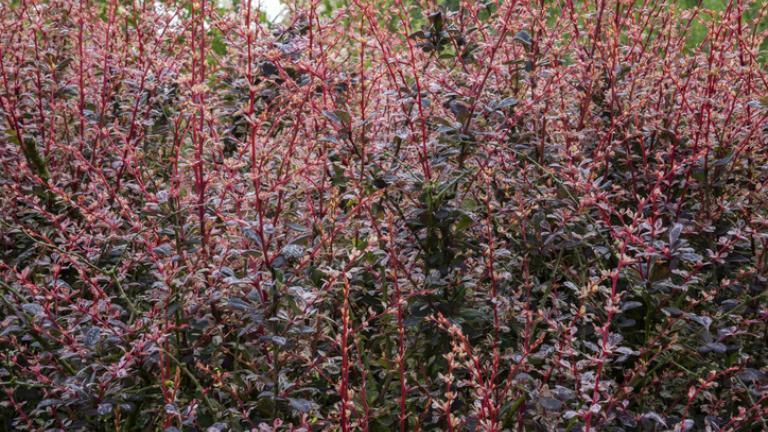Have you ever heard of an invasive species? Invasive species are organisms that are not native and whose introduction causes harm, or is likely to cause harm to Michigan’s economy, environment, wildlife and/ or human health. You may not have known it, but you’ve probably seen some invasive species along road right-of-ways, at the park or at your local nursery. You may even have some that you were unaware of.
A few common invasive species to Michigan can be found in garden nurseries. Japanese barberry, glossy and common buckthorn, honeysuckles and multiflora rose are woody invasive species you may have heard of but didn’t know were invasive. Proper disposal includes double bagging materials and mobilizing them to a landfill or once fully dried, they may be burned.
A few herbaceous plants to be familiar with are Japanese knotweed, flowering rush, himalayan balsam and garlic mustard. These types of plants should not be composted or burned. Many seeds may remain viable after composting and some are fire resistant. To best dispose of non-herbaceous invasives, double bag plant material and allow it to decompose in sunlight for several days before placing it in the garbage.
Aquatic invasives like water lettuce, water hyacinth, European frog-bit and purple loosestrife can be double bagged and thrown in your trash bin. Following RIPPLE, aquatic plants and animals from aquariums and water gardens should never be disposed of in the natural environment. This includes lakes, ponds, rivers and even the drains in your backyard!
Whether you have a water garden you need to dispose of, a boat you may be washing to get rid of invasive species and plant material or are moving to a more native approach in your garden, resources are available to help you! You can click here for a complete list of ornamental invasives and here for a comprehensive guide on invasive plant disposal.
Last year, the Lake St. Clair Cooperative Invasive Species Management Area (LSC CISMA) removed over 3000 lbs. of invasive water lettuce and water hyacinth from a Macomb County drain. To read the full story, click here. In 2022, the LSC CISMA plans to continue early detection, rapid response and outreach efforts for invasive species. For more information, visit our website at lakestclaircisma.com.
Guest blog provided by the Lake St. Clair CISMA.
About the Lake St. Clair CISMA
The Lake St. Clair CISMA is a partnership of local and state governments, non-profits, and educational institutions founded in 2015. United in their goal to prevent, detect, and control priority invasive species, the LSC CISMA operates within the vast boundaries of the Lake St Clair Watershed covering 2,100 square miles. The LSC CISMA is funded by the Michigan Invasive Species Grant Program (Michigan.gov/Invasives).
Six Rivers Land Conservancy is a 501 (c)(3) nonprofit whose mission is to conserve, sustain, and connect natural areas, lands, and waters that make the places we live special. Six Rivers has currently protected over 2,000 acres in Oakland, Macomb, St. Clair, Lapeer, and Genesee Counties and is the fiduciary for the Lake St. Clair CISMA. If you'd like more information about our work, volunteer opportunities, or to make a donation, please visit sixriversrlc.org.







